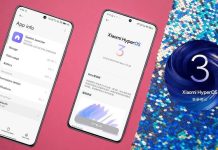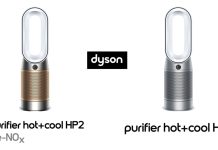The Oura Ring 4 stands as one of the most refined health wearables, designed to deliver insights with clinical-grade precision. Unlike wrist-worn devices that rely heavily on motion data, this sleep tracking ring gathers a wide spectrum of biometric signals from the finger—arguably the most accurate place to collect physiological data.
As sleep becomes a critical focus in wellness and longevity, accurate tracking tools are in high demand. We now explore how the Oura Ring 4 measures up in terms of sleep accuracy, its sensor technology, and real-life utility for users seeking better rest and recovery.

Sensor Technology: The Core of Sleep Data Collection
The Oura Ring 4 incorporates a suite of highly sensitive sensors embedded in its titanium shell:
-
Infrared Photoplethysmography (PPG): Measures heart rate and heart rate variability (HRV)
-
Negative Temperature Coefficient (NTC) Thermistors: Monitor minute body temperature fluctuations
-
3D Accelerometer and Gyroscope: Detect sleep posture, movements, and stillness
-
SpO2 Sensor: Tracks blood oxygen levels during sleep, essential for detecting breathing disturbances
This combination provides the foundation for accurate, nuanced sleep analysis.
How the Oura Ring 4 Tracks Sleep Stages
The Oura Ring 4 sleep system doesn’t just measure time in bed. It uses multiple data points to map out the following stages:
-
Light Sleep: Associated with basic restoration
-
Deep Sleep: Essential for physical recovery and immune function
-
REM Sleep: Crucial for cognitive repair and emotional processing
-
Wake Periods: Short awakenings, often unnoticed by the user
Each stage is inferred by analyzing variations in HRV, body temperature, and subtle movements. The device automatically recognizes the start and end of the sleep window without manual input.
Sleep Score: The Holistic Indicator
The Oura Ring 4 calculates a Sleep Score on a 100-point scale based on seven contributing factors:
| Metric | Description |
|---|---|
| Total Sleep | Duration of actual sleep (excluding wake time) |
| Sleep Efficiency | Time asleep vs. time in bed |
| Restfulness | Movement and disturbances during sleep |
| REM Sleep | Time spent in rapid eye movement stage |
| Deep Sleep | Duration of physically restorative sleep |
| Latency | Time taken to fall asleep |
| Timing | Alignment with circadian rhythm |
Each component is weighted based on its impact on sleep quality, offering users a comprehensive daily snapshot.
Real-World Sleep Accuracy Comparison
Clinical Validation
A peer-reviewed study published in Behavioral Sleep Medicine compared Oura’s sleep staging to polysomnography (PSG)—the gold standard for sleep studies. Results showed:
-
76–85% accuracy in detecting total sleep time
-
70%+ accuracy for REM and deep sleep stages
-
Above 90% sensitivity in identifying periods of sleep vs. wakefulness
While it doesn’t replace a clinical sleep study, the Oura Ring 4 sleep tracking ring provides impressively reliable data for at-home use.
Comparison with Other Sleep Trackers
| Feature | Oura Ring 4 | Apple Watch | Fitbit Sense | Whoop 4.0 |
|---|---|---|---|---|
| Sleep Stage Breakdown | Yes | Basic | Yes | Yes |
| Body Temperature | Yes | No | Skin temp only | Yes |
| SpO2 Tracking | Yes | Yes | Yes | Yes |
| HRV Monitoring | Yes | Yes | Yes | Yes |
| Automatic Detection | Yes | Yes | Yes | Yes |
| Accuracy (vs PSG) | High | Moderate | Moderate | Moderate |
The finger placement advantage of the Oura Ring ensures cleaner signal acquisition, which generally results in higher sleep tracking accuracy.
Benefits of Oura’s Sleep Insights in Daily Life
-
Circadian Rhythm Alignment: By tracking sleep consistency, Oura helps reinforce stable biological rhythms.
-
Recovery Optimization: Sleep quality data influences Oura’s Readiness Score, advising on whether to train hard or rest.
-
Sleep Debt Tracking: Shows how recent poor sleep impacts overall wellbeing and mental alertness.
-
Stress and Illness Indicators: Disrupted sleep patterns, especially reduced HRV and raised temperature, can signal oncoming illness or burnout.
These insights encourage users to make evidence-based decisions about bedtime routines, stress management, and even workout intensity.
Limitations and Considerations
While the Oura Ring 4 sleep accuracy is strong, certain limitations exist:
-
It cannot diagnose sleep disorders such as sleep apnea (though it can hint at irregular breathing via SpO2 metrics).
-
Sleep stage detection, like all non-EEG devices, is algorithm-based and subject to occasional misclassification.
-
Optimal results require consistent wearing and syncing with the app every morning.
Despite these caveats, its passive, screenless design encourages long-term use without disruption.
Is Oura the Most Accurate Sleep Tracking Ring?
With its fourth-generation improvements and advanced biosensing, the Oura Ring 4 emerges as one of the most accurate consumer-grade sleep tracking rings on the market. Its ability to combine HRV, temperature, SpO2, and motion into actionable insights elevates it above wristwear alternatives.
For individuals prioritizing sleep accuracy, recovery-based training, or long-term wellness monitoring, Oura Ring 4 presents a discreet and scientifically grounded solution.




